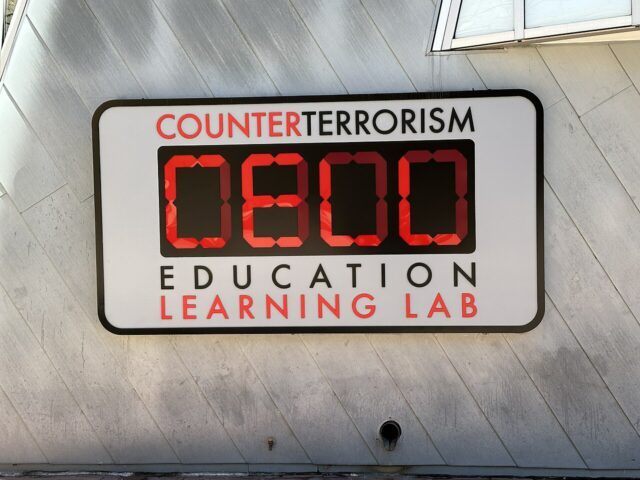Decoding Terrorism Threats: Definitions and Strategic Insights

Geopolitical Report ISSN 2785-2598 Volume 41 Issue 2
SpecialEurasia OSINT Unit
Understanding the nature and dynamics of terrorism threats is crucial for ensuring the safety and security of nations worldwide.
The recent terrorist attack against the Crocus City Hall in Moscow, which caused the death of over 140 people, highlighted how serious is the menace posed by terrorist organisations and the necessity to counter their activities and propaganda.
In order to effectively participate in counter-terrorism activities, it is crucial to have a comprehensive understanding of the key definitions associated with terrorism and its threats. This knowledge will not only enhance strategic insights, but also provide a valuable perspective on the ever-evolving landscape of global security.
Terrorism: Definitions and Dimensions
There is no one common definition of terrorism and every government has established its concept of what is terrorism and adopted a strategy to counter any threats coming from terrorist groups and jihadist propaganda.
Broadly speaking, we can state that terrorism, as a phenomenon, encompasses a range of activities aimed at instilling fear, coercion, and disruption within societies.
It entails the deliberate use of violence or intimidation to further political, ideological, or religious objectives. This definition underscores the indiscriminate targeting of civilians and symbolic entities, highlighting the threat it poses to societal stability and peace.
Legally, authorities categorise terrorism as the unlawful use of force against individuals or property intending to influence governments or civilian populations. Such actions are driven by specific social or political agendas, often challenging the established order and norms of governance.
Terrorism threats encompass a spectrum of factors, including the intentions, capabilities, and motivations of terrorist actors. These threats extend beyond conventional warfare, often exploiting vulnerabilities within societies and critical infrastructure.
Understanding terrorism threats requires a comprehensive analysis of various elements, such as the ideological frameworks driving terrorist ideologies, the operational capabilities of terrorist groups, and the developing tactics and strategies employed to achieve their objectives. Evaluating terrorism threats involves assessing the potential impact of terrorist actions on public safety, national security, and socio-political stability.
The Crucial Role of Terrorism Threat Intelligence
Gathering intelligence on terrorism threats is crucial in efforts to counter terrorism, as it helps decision-makers receive timely and useful information to predict and address potential threats.
This intelligence draws from diverse sources, including human intelligence (HUMINT), signals intelligence (SIGINT), geospatial intelligence (GEOINT), and open-source data (OSINT), to generate a comprehensive understanding of terrorist activities and intentions. By analysing patterns, trends, and indicators of terrorist behaviour, intelligence agencies can identify emerging threats, disrupt terrorist networks, and prevent attacks before they occur.
Terrorism threat intelligence enables security agencies to anticipate and adapt to growing threats, staying one step ahead of terrorist adversaries. By monitoring online communications, social media activity, and financial transactions, analysts can identify radicalisation trends and recruitment efforts, providing early warning indicators of potential terrorist activities.
The effectiveness of counterterrorism efforts relies on intelligence sharing and collaboration between both domestic and international partners. This allows for the smooth exchange of information and coordination of response strategies across borders.
Strategic Analysis and Response: Mitigating Terrorism Threats
Effective counterterrorism strategies require a multifaceted approach that integrates strategic, operational, and tactical analysis of terrorism threats. Strategically, analysts examine broader trends in terrorist activities, contextualising them within socio-political landscapes and ideological frameworks.
Having a comprehensive understanding empowers policymakers to devise strategies that target the fundamental factors behind terrorism, counter extremist narratives, and foster social cohesion and resilience.
Operational and tactical analysis focus on specific threats and vulnerabilities, enabling security agencies to devise targeted response strategies and enhance preparedness measures.
By conducting risk assessments, scenario planning, and threat modelling, stakeholders can identify critical infrastructure, high-risk targets, and potential attack vectors, implementing proactive measures to mitigate vulnerabilities and enhance security posture. Additionally, fostering community engagement and building trust between law enforcement agencies and local communities is essential for identifying and disrupting terrorist activities at the grassroots level.
Conclusion
To wrap up, successfully decoding terrorism threats necessitates a sophisticated comprehension of critical definitions and their consequences in the realms of intelligence analysis and security operations.
By effectively leveraging terrorism threat intelligence, implementing proactive strategies, and fostering strong international cooperation, stakeholders can effectively mitigate the risks posed by terrorism and ensure the safety and security of societies against its devastating impacts.
Read also | Terrorist Attack at Crocus City Hall in Moscow: A Preliminary Intelligence Report |
For further information about SpecialEurasia training courses on Terrorism Analysis or paid reports on terrorism organisations and activities, please contact us at info@specialeurasia.org.
